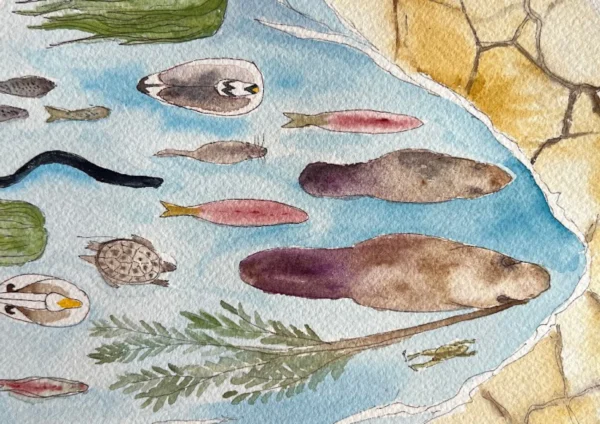
Exposition Météo des forêts
Entre constat des impacts de la crise climatique en cours et possibilité de résilience, l’exposition Météo des forêts propose des…

Parsons The New School for Design
October 1—December 15, 2010
Opening Reception: September 30,
6:30—8:30 pm
Vacant Lot grow bag, What if: projects Ltd.
The Sheila C. Johnson Design Center (SJDC) at Parsons The New School for Design presents Living Concrete/Carrot City, an exhibition that explores the role of design and grassroots activism in the development of urban agriculture, and its effect on neighborhoods, health and the environment in cities such as New York.
« Living Concrete/Carrot City is at once a public forum, a teaching tool, and a design showcase, » said Radhika Subramaniam, director of the SJDC and co-curator of the exhibition. « In inviting farmers, designers, artists, media advocates, researchers, and students to think together, we aim to cultivate a conversation on urban farming that functions as what artist Joseph Beuys called ‘social sculpture’, a mixture of creative action and social transformation. »
The exhibition is a dialogue between The New School and Ryerson University in Canada. Living Concreteexamines urban food initiatives and their impact on local communities—from backyard community plots, roof gardens, and farmer’s markets to urban farms—through projects undertaken by New School students and faculty. The exhibition features maps, installations, interactive websites, videos and models, several created specifically for the show. Highlights include a « field guide » to local food on the Lower East Side; a participatory project to re-design bodegas; sound and video installations that explore urban beekeeping; and a multimedia piece on Corbin Hill Road Farm, an innovative venture where families in the South Bronx own shares of an upstate farm.
Carrot City: Designing for Urban Agriculture, curated by Mark Gorgolewski, June Komisar and Joe Nasr from Ryerson University, explores the interchange between urban farming and design, and showcases innovative projects such as grow bags that enable city dwellers to create gardens on any terrain. Carrot Citydemonstrates how new developments in agriculture impact urban design and how design, in turn, can facilitate a more robust urban food system.
« This exhibition is about more than just the ability to grow food in cities; it is about the social interconnections of the people involved in food production, » said Living Concrete co-curator Nevin Cohen, Chair of Environmental Studies at The New School and co-director of the Tishman Environment and Design Center. « Urban farming is integral to the sustainability of our cities, and the projects showcased here demonstrate the civic dimensions of this process. »
As part of the exhibition, Cohen will lead students through a research project that will map out New York City’s food system, identifying interesting patterns in food production, distribution and consumption. The project, which will « grow » over the course of the exhibition, is part Cohen’s fellowship with the Design Trust for Public Space, where he is helping to develop a citywide plan for urban agriculture in partnership with Added Value, a large community farm in Brooklyn, and city government.
« It is fitting that the first destination of Carrot City as it travels from Toronto is New York City, as both cities are at the forefront of design for urban agriculture, » said Joe Nasr, co-curator of Carrot City.
Living Concrete/Carrot City will feature a « platform for public pedagogy, » a space that will host weekly lectures and panel discussions. Sessions will include « Food Design and Social Change » (Oct. 6), featuring several New York City urban agricultural leaders, including Karen Washington, President of the NYC Community Garden Coalition and Dennis Derryck of Corbin Hill Farm; and the launch of Robert Gottlieb’s new book Food Justice, introduced by Majora Carter (Oct 14). Other speakers through the fall include Erika Allen of Growing Power, Stella Chao from the Seattle Department of Neighborhoods, Gabrielle Langholtz of Edible Brooklyn and Edible Manhattan, Katy Keiffer from Heritage Radio Network, and Marion Nestle, among others. For the full schedule of events, please visit http://www.newschool.edu/parsons/sjdc
Parsons The New School for Design
Anna-Maria and Stephen Kellen Gallery
Sheila C. Johnson Design Center
66 Fifth Avenue at 13th Street
http://www.newschool.edu/parsons/sjdc
Entre constat des impacts de la crise climatique en cours et possibilité de résilience, l’exposition Météo des forêts propose des…
Une exposition qui explore les liens entre Deep Listening et écologie, dans le nouvel espace de la Fondation Pernod Ricard,…
Exposition sur le lien environnemental entre la rivière et le castor à l'Artothèque, Espaces d'art contemporain, Caen

